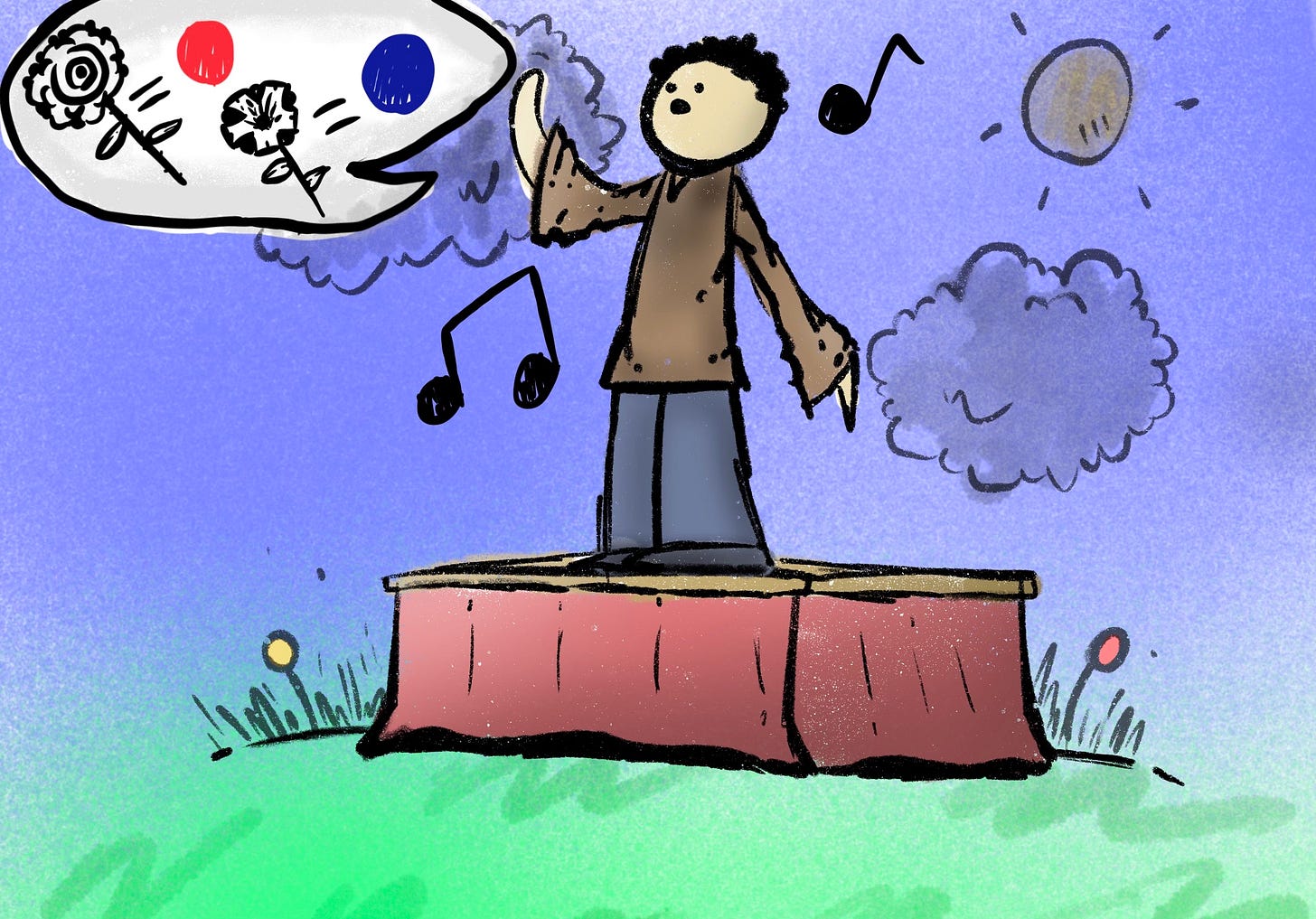What are songs for? There needn't be just one answer. A song can be for telling a story or sketching a scene, as in "Hearts and Bones," when Paul Simon sings of "One and one-half wandering Jews / ...traveling together in the Sangre de Christo / The Blood of Christ Mountains in New Mexico”; or when he sings, of course, of going to Graceland, in the song by that name. Alternatively, a song can be for communicating a feeling or an emotion. Whatever else Robert Smith was aiming at, when The Cure recorded Disintegration, he wanted to get across a sadness and a longing borne of a deep desperation.
Either way, interpretive questions might arise. Wait—are they traveling together through the Flood of Christ Mountains? Does Springsteen’s “Born in the USA” express patriotic pride, or anti-patriotic outrage? There’s something to figure out; there’s something you might have gotten it wrong.
Yet also there is a third possibility—that a song is for...whatever the listener wants to make of it. In the Epilogue to Malcolm Gladwell’s Miracle and Wonder: Conversations with Paul Simon, Simon repeats a refrain: the listener completes the song. Gladwell and Simon discuss these lines from “Love is Like a Braid,” a track on Paul Simon’s latest album Seven Psalms:
Keep reading with a 7-day free trial
Subscribe to Mostly Aesthetics to keep reading this post and get 7 days of free access to the full post archives.




